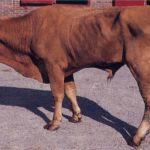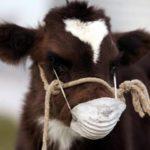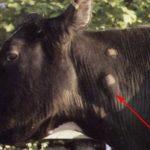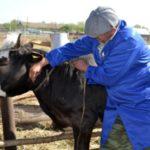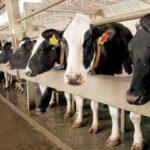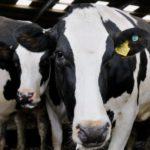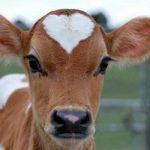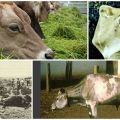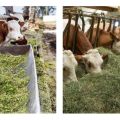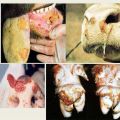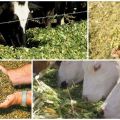Symptoms and diagnosis of tuberculosis in cattle, treatment and vaccination
Tuberculosis is a bacterial disease that affects all types of warm-blooded creatures: humans, wild and domestic animals, birds. The pathology is characterized by high contagiousness (infectiousness), mortality. Tuberculosis in cattle is latent or chronic. Infected individuals are a potential danger to the herd and humans. Cattle owners should know all the information on how to suspect the first signs of pathology.
Historical reference
Tuberculosis has a long history of research. According to official sources, its symptoms were identified during the research of ancient Egyptian mummies. This discovery confirms the fact that the disease existed several thousand years ago. The "father of medicine", Hippocrates, was the first to describe the clinical manifestations of pathology.
The French physician Villemin established the infectiousness of tuberculosis. The scientist also proved that animals are also exposed to the disease, described the ways of transmission between them and humans. The causative bacterium was discovered by Robert Koch in 1882. This put an end to all scientific controversy about whether there is a link between animal and human tuberculosis.
It was found that cows, pigs and horses kept in captivity are more susceptible to pathology.
Economic damage
Tuberculosis is included in the structure of significant and especially dangerous animal diseases. The epizootic situation remains tense not only in Asia, Africa, but also in developed countries - England, Germany, USA. More than 25 million head of cattle are infected in Russia every year. The most unfavorable regions for tuberculosis are the Moscow region, Tatarstan, and Bashkortostan.
The disease causes significant damage to farms and private land. A sharp decline in productivity, premature culling, forced slaughter of individuals, long and expensive preventive measures - all this significantly hits the pockets of cattle owners. The economic damage from tuberculosis in Russia over the past 40 years has amounted to more than 84 billion rubles. The country has lost millions of tons of meat, milk, offspring. The cost of improving the epizootic situation has exceeded 27 billion.
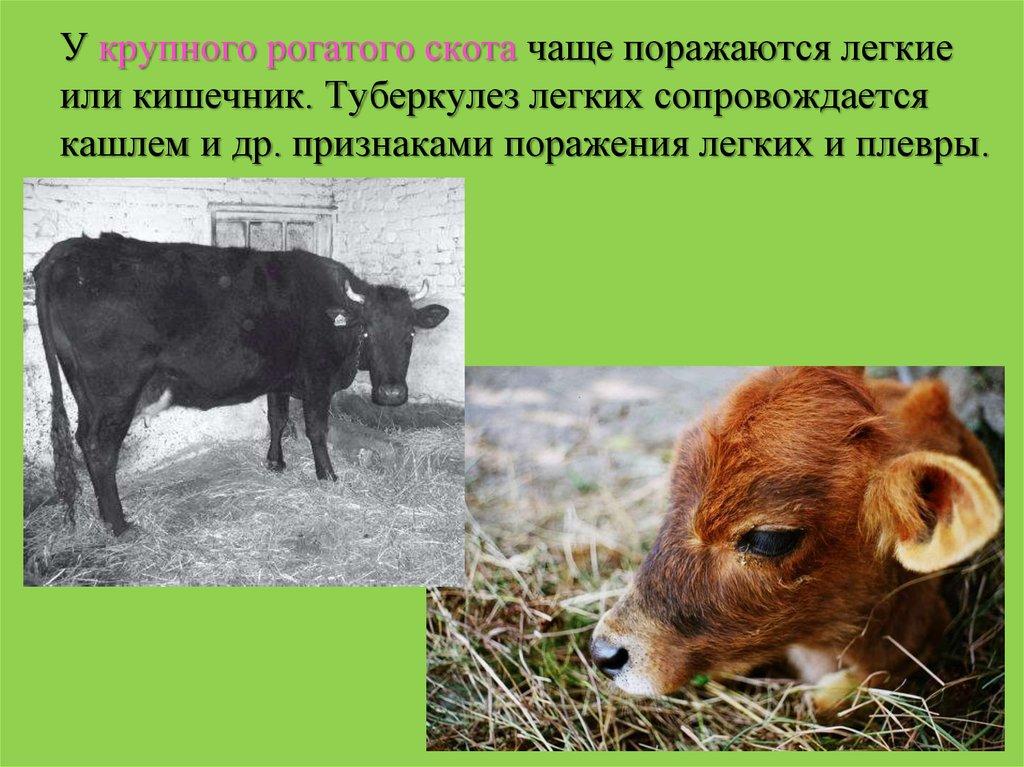
Pathogen and source of infection in cows
The disease is caused by mycobacteria (Koch's sticks). These are oblong, motionless, bent microorganisms. They develop without oxygen access, do not have devices for movement. Mycobacterium tuberculosis is widespread in the environment and is able to remain active for a long time.For example, in soil and manure, mycobacteria remain up to 2 years, in water - up to 5 years, in frozen meat - a year.
There are 3 known subtypes of the pathogen: bovine, avian and human. Cows and other cattle are susceptible to infection by any of these species. Only the course of the disease differs: with the human type, the symptoms are less pronounced. The tuberculosis pathogen enters the body through the mucous membrane of the respiratory organs, through the digestive tract. Routes of transmission - aerobic, alimentary, transplacental (intrauterine). List of causes and sources of cattle infection:
- One individual fell ill in the herd. The causative agent of tuberculosis is released into the external environment with any fluids (urine, feces, sputum).
- Keeping in a stall after a sick individual. The bacterium retains its vital activity in manure, straw heaps, in the ground under the floor.
- Infection of young animals through colostrum / mother's milk.
Aggravating factors - group overcrowded keeping of cattle, unsanitary conditions and dirt in stalls, lack of normal temperature conditions. Often, the cause of infection is a person with open tuberculosis. With an inadequate diet in cows, the immune defense decreases, the risk of contracting tuberculosis increases.
You should also pay attention to pastures, they should be equipped for walking cattle.
Symptoms and signs of the disease
The duration of the incubation period for tuberculosis in cattle is from 14 days to 6 weeks. Most often, the disease develops latently, with the first noticeable symptoms appearing several months or even years after infection. Acute course is typical only for young animals and calves. On the basis of the lesion site, several types of tuberculosis in cattle are distinguished:
- Lungs.
- Intestines.
- Uterus.
- Udder.
- Generalized form - dispersion of pathogens through the blood, simultaneous defeat of 2 or more systems.
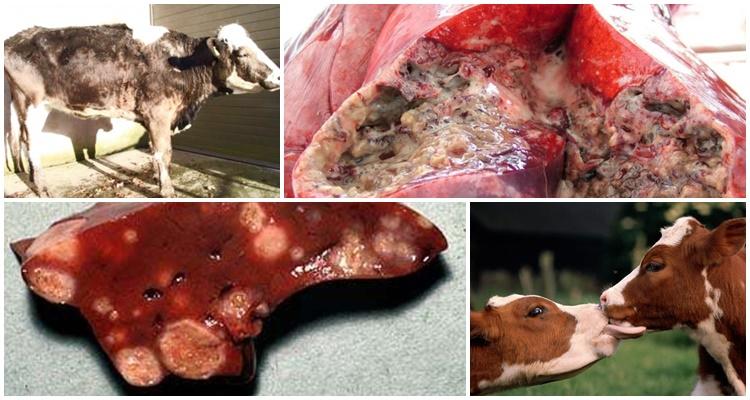
Specific symptoms for different types of bovine tuberculosis.
| Infected organ | Signs |
| Lungs | 1. Violent dry and painful cough. 2. Shallow, rapid breathing. 3. Mucous discharge when coughing. 4. Hearing wheezing, moaning. When pressing the area between the ribs, the animal reacts sharply due to severe pain. Infected individuals quickly lose weight, become emaciated. |
| Udder | 1. Strongly swells, becomes hard, bumpy. 2. The suprauterine lymph node is enlarged. 3. Wrinkling and deformation of the nipples is possible. 4. Watery colostrum or curd with blood clots during milking. |
| Intestines | Chronic diarrhea. Great emaciation, weight loss. Pus and blood in the stool. |
| Uterus, genitals | In male cattle, swelling occurs, orchitis and uveitis begin. Females have barrenness, offensive green discharge. |
| Generalized type | Enlargement of all lymph nodes, extensive lung damage, impaired respiratory function, intoxication. |
Diagnostic measures
The main method of intravital diagnosis of cattle is tuberculinization. This is an intradermal allergic test with tuberculin test. Tuberculin is a sterile filtrate of killed bacteria. The procedure is carried out on a regular basis, starting from the age of two months. Frequency - 2 times a year (spring, autumn).
How is cattle diagnosed:
- A place is chosen. In bulls, this is the tail fold, in cows, the middle of the neck, and in young animals, the shoulder blades. A small area is cut out, treated with alcohol.
- 0.2 ml of tuberculin is injected.
- The animal is left for observation for 3 days.
Based on the information received, the result is established: if a swelling of more than 3 mm appears at the injection site, this is a positive result for tuberculosis. If the temperature of the skin at the injection site rises and soreness appears, this is also a positive result.
How to treat tuberculosis in cattle
There is no cure for bovine tuberculosis in veterinary practice. It is impossible to cure infected cows. The farm where the disease is recorded is considered to be successful or dysfunctional. In the second case, quarantine restrictions are imposed on it.
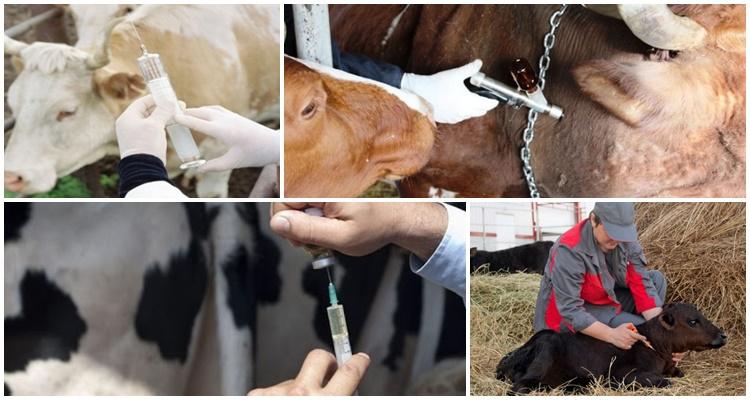
Wellness work is carried out in 2 directions. The first is regular samples and laboratory tests. The goal is to identify tuberculosis and slaughter all infected individuals. Cattle inspections and rejection are carried out every 60 days. The second is a complete replacement of the cattle population, including young animals. This direction is applicable if the percentage of infected individuals in the herd exceeds 15. Accompanied by the treatment and disinfection of the places of detention - removing the floor covering, treatment with formaldehyde and caustic soda. Manure, garbage, inventory, 10-14 cm of the topsoil (if the floor was laid on the ground), are taken out for disposal.
Problem prevention
Thorough prevention is an effective measure to protect cattle from tuberculosis. To develop immunity, it is permissible to use the BCG vaccine and tuberculous toxoid. The interval is 10-14 days. But such protection against the disease is characterized by an insufficiently long duration. Therefore, compliance with other measures is recommended.
Mandatory preventive actions:
- Compliance with hygiene norms and standards when keeping, feeding and walking cattle.
- Registration of animals in veterinary institutions.
- Compliance with quarantine for new individuals (30 days). Probing them at the veterinarian.
- Thorough examination of the entire livestock at least 2 times a year.
- Annual X-ray for people who work with cattle.
- Periodic disinfection of places of detention.
Ways of transmission of tuberculosis from animals to humans
In total, there are 3 ways of transmission of tuberculosis from cattle to humans. Through meat and dairy products, since meat and milk contain many pathogenic bacteria. The risk of infection is present in the absence of proper heat treatment. The next way is contact. At risk are farm workers: infection occurs when cleaning the barn, since pathogens are on the bedding of livestock.
The last way is airborne. The animal releases microparticles of mucus and bacteria into the air. Koch's stick remains active for a long time if it is hot, humid, and lacking ventilation in the barn. Inhaling such air, a person becomes infected with tuberculosis.
Bovine tuberculosis is an incurable disease. Its danger lies in the latent course and the prolonged absence of typical symptoms. Cows are susceptible to all types of pathogens, any organ can be affected: from the lungs to the uterus. Tuberculosis is the real reason for the loss of the entire population. And only careful prevention, compliance with sanitary standards act as a barrier and protection of cattle from Koch's bacillus.
